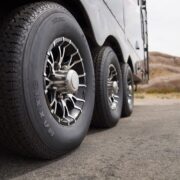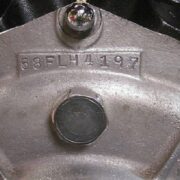Utah is an amazing base of operations for your RV adventures. The state is filled with RV parks of its own and conveniently located close by some of the best RV destinations in the country, like the Grand Canyon and other vistas. But when winter comes, it’s time to get off the road. You want to keep your RV safe until it’s time for the next adventure, so what’s the best way to do that? Here’s what you need to know.
How do I prepare for storage?
No matter where you intend to keep your RV, there are some things you need to do so it will be ready to roll next spring:
- Consider removing the tires so they don’t get flat spots.
- Clean the outside and thoroughly dry it.
- Make sure any awning or pop-up fabric is clean, dry, and in good repair.
- Lubricate all hinges and locks.
- Remove anything perishable or any consumable from the RV.
- Open all the drawers and cabinets so they’ll air out.
- Turn off the main breaker and unplug any appliance you’re leaving in the RV.
- Remove the gas leak detector fuse so it doesn’t drain the battery.
- Fill the fuel tank and add a fuel stabilizer.
- Change the oil and filter so acids don’t corrode engine bearings.
If you’re going to store your RV outdoors all winter, or for more than just one winter, there are more things you’ll need to do to protect it. Your best bet is always to store your expensive vehicle in a storage unit.
Why should I use a storage unit?
Thankfully, there’s lots of RV storage in Cedar City and lots of good reasons to use storage facilities of this nature. These facilities are made to handle vehicles as large as an RV, which your average home garage is not. They also typically come with security features like fences and video surveillance while still giving you access to your space whenever you need it.
Another enormous advantage to these facilities is protection from the elements and small creatures. Mice are always looking for a place to hole up for the winter, and RVs are perfect. Mouse-proofing your RV is an arduous, painstaking task, and if you miss one hole you could be dealing with expensive damage when spring arrives.
Won’t it cost too much to use a storage facility?
Most importantly, having your RV in storage means you won’t risk paying hugely expensive repairs because mice chewed through your wiring or there’s extensive mildew and rot. This alone is worth the price of storage for a few months.
If you’re worried about what to do with your personal storage space when the RV isn’t in it, there’s no need to be concerned. For one thing, many facilities will let you rent by the month, so you need only pay for storage when you want it. For another, you might just find that having a self-storage unit has other benefits.
Most of us have way too much stuff, and we tend to shove a lot of it in the garage. Whether it’s your childhood sports trophies or a beloved white lace dress, you might be happy to have extra space for storing items you love and want to keep safe, at any time of year.
What should I do while it’s in storage?
You should visit your RV once a month and turn it on. Run the air conditioner from the dash for about 30 minutes to keep the compressor in good health and make sure no mold builds up in system.
While you’re there, check that no mold or mildew is building up inside or outside, particularly on or in fabrics. Open up the unit and the RV and let it breathe. Your RV will thank you, and you’ll be glad you did when you pull it out to start next year’s RVing adventure.
















Comments